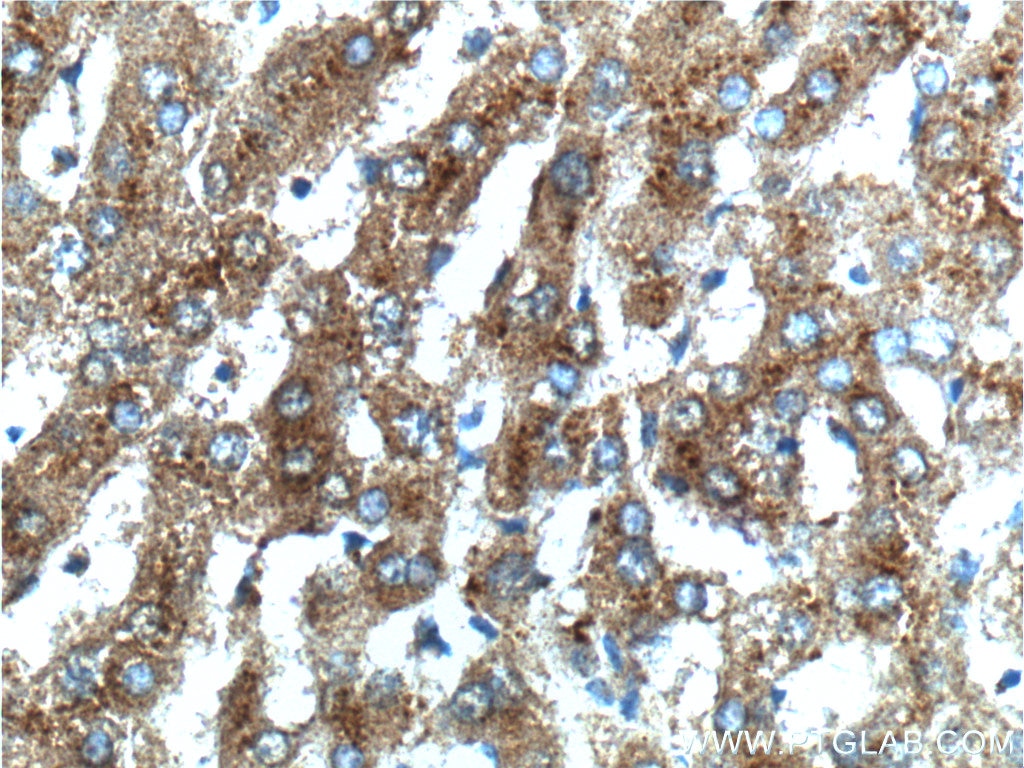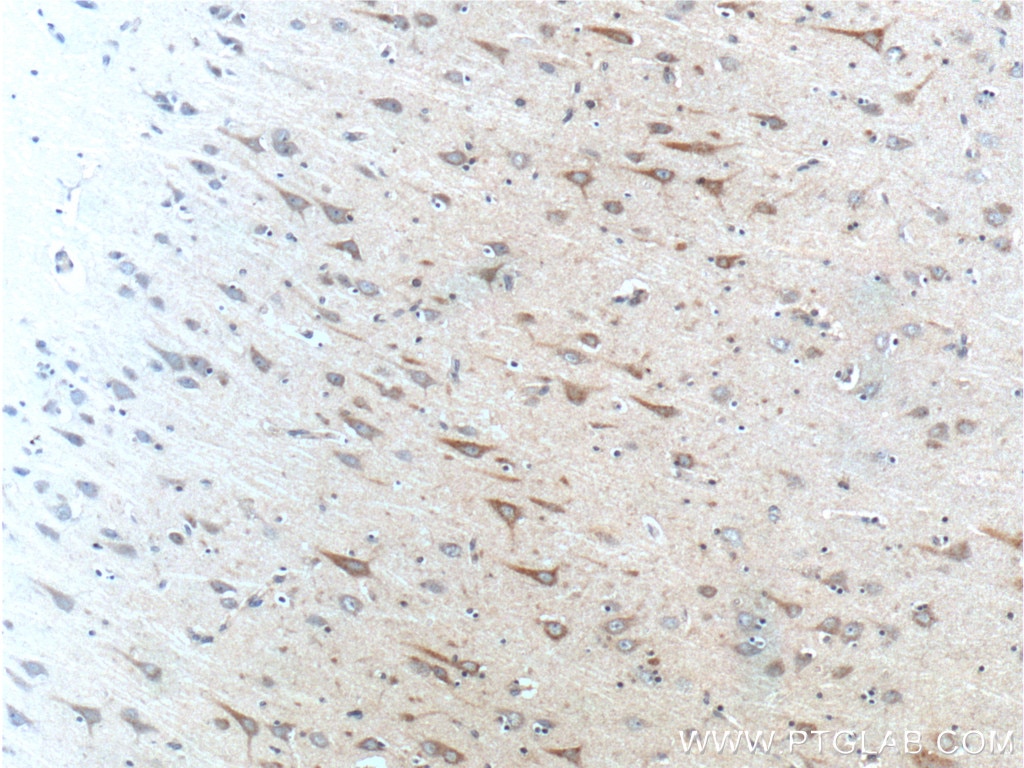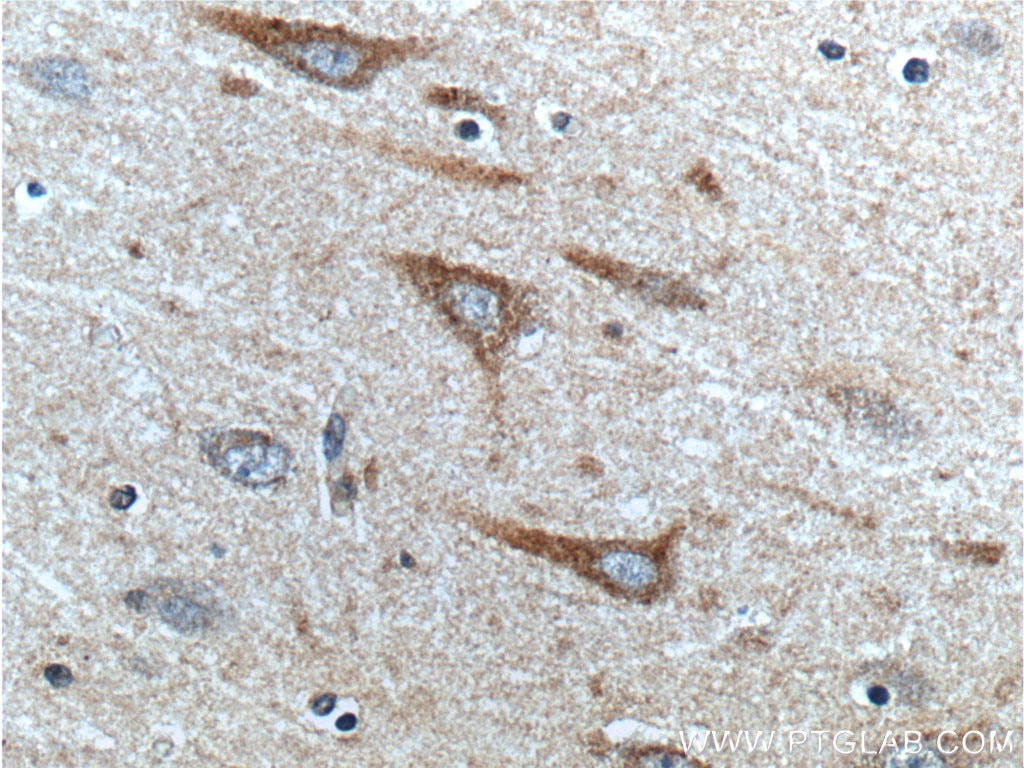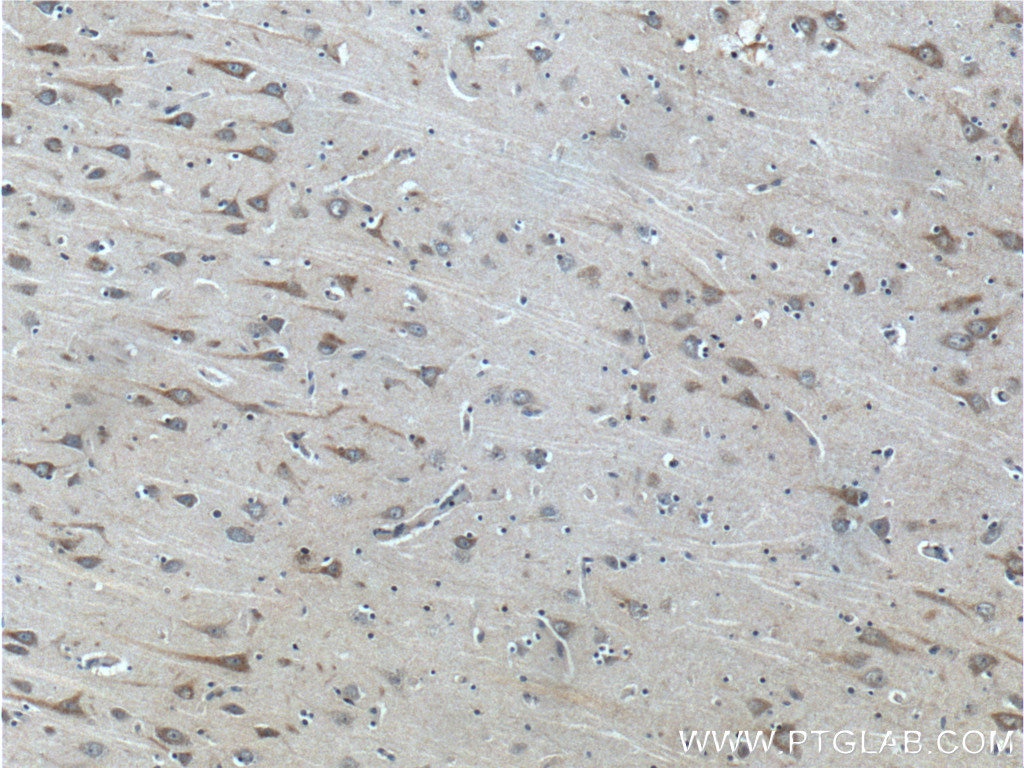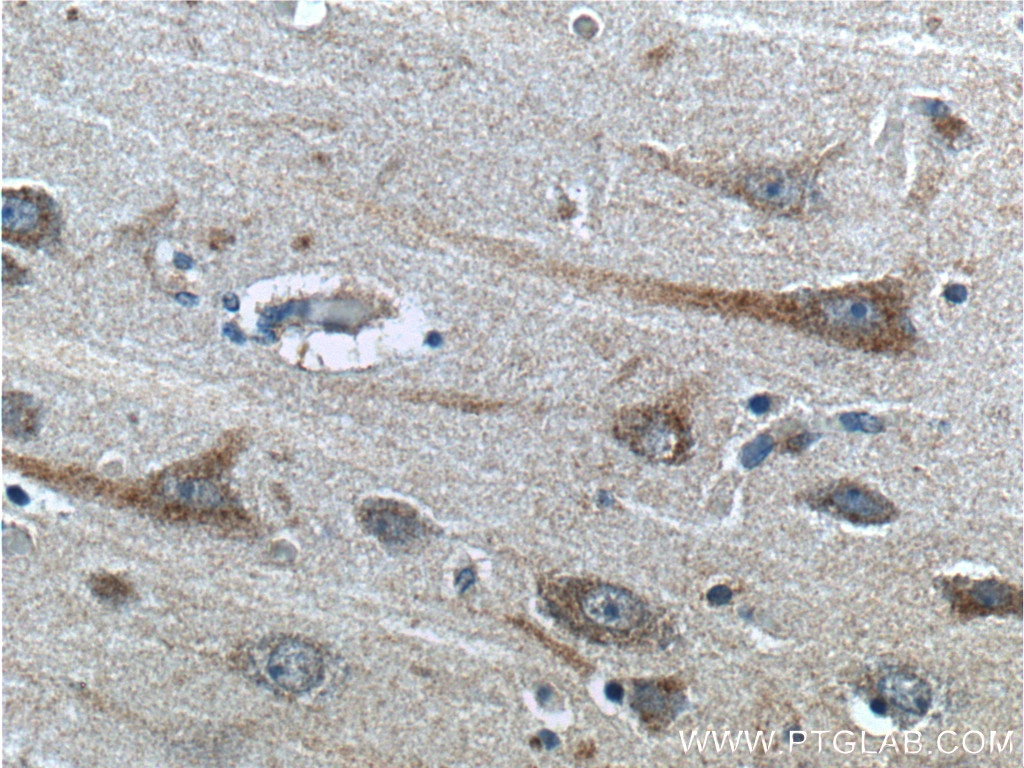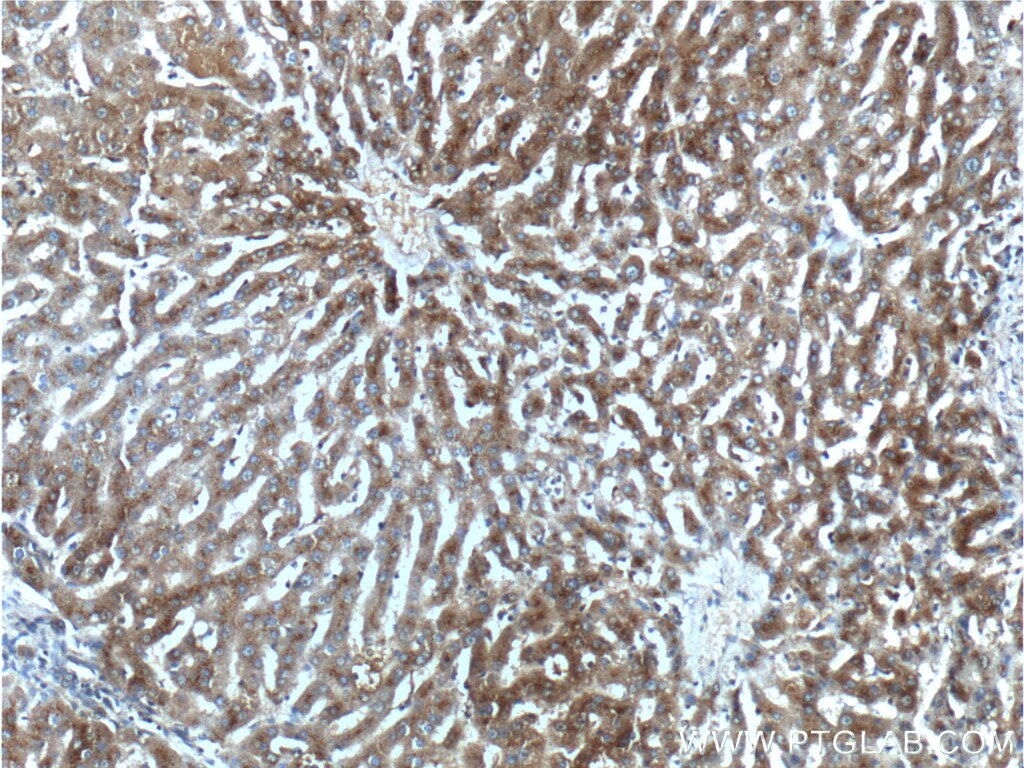- Phare
- Validé par KD/KO
Anticorps Polyclonal de lapin anti-SCD
SCD Polyclonal Antibody for IHC, ELISA
Hôte / Isotype
Lapin / IgG
Réactivité testée
Humain, rat et plus (1)
Applications
IHC, ELISA, IF
Conjugaison
Non conjugué
N° de cat : 23393-1-AP
Synonymes
Galerie de données de validation
Applications testées
| Résultats positifs en IHC | tissu hépatique humain, tissu cérébral humain il est suggéré de démasquer l'antigène avec un tampon de TE buffer pH 9.0; (*) À défaut, 'le démasquage de l'antigène peut être 'effectué avec un tampon citrate pH 6,0. |
Dilution recommandée
| Application | Dilution |
|---|---|
| Immunohistochimie (IHC) | IHC : 1:20-1:200 |
| It is recommended that this reagent should be titrated in each testing system to obtain optimal results. | |
| Sample-dependent, check data in validation data gallery | |
Applications publiées
| KD/KO | See 3 publications below |
| IHC | See 11 publications below |
| IF | See 3 publications below |
Informations sur le produit
23393-1-AP cible SCD dans les applications de IHC, ELISA, IF et montre une réactivité avec des échantillons Humain, rat
| Réactivité | Humain, rat |
| Réactivité citée | rat, Humain, souris |
| Hôte / Isotype | Lapin / IgG |
| Clonalité | Polyclonal |
| Type | Anticorps |
| Immunogène | SCD Protéine recombinante Ag13456 |
| Nom complet | stearoyl-CoA desaturase (delta-9-desaturase) |
| Masse moléculaire calculée | 355 aa, 41 kDa |
| Poids moléculaire observé | 40 kDa |
| Numéro d’acquisition GenBank | BC005807 |
| Symbole du gène | SCD |
| Identification du gène (NCBI) | 6319 |
| Conjugaison | Non conjugué |
| Forme | Liquide |
| Méthode de purification | Purification par affinité contre l'antigène |
| Tampon de stockage | PBS avec azoture de sodium à 0,02 % et glycérol à 50 % pH 7,3 |
| Conditions de stockage | Stocker à -20°C. Stable pendant un an après l'expédition. L'aliquotage n'est pas nécessaire pour le stockage à -20oC Les 20ul contiennent 0,1% de BSA. |
Informations générales
SCD (stearoyl-CoA desaturase) is a 37-45 kDa (PMID:10946019) microsomal fatty acid monodesaturase, also commonly known as 9-desaturase, which catalyses the committed step in the biosynthesis of mono-unsaturated fatty acids from saturated fatty acids. Five SCD genes (SCD1, SCD2, SCD3,SCD4 and SCD5) have been identified and characterized in mice and SCD1 and SCD2 are the main isoforms expressed in mouse liver and brain respectively, SCD3 is expressed exclusively in skin, whereas SCD4 is expressed predominantly in the heart. SCD1and SCD5 has been the only human SCD gene identified and characterized todate(PMID:15907797 ). The formation of homodimers and oligomers is an intrinsic property of SCD proteins, which may play an important role in regulating the half-life of the SCDenzymes, thus representing a novel regulatory mechanism for SCD enzymes, in addition to the transcriptional and post-translational regulations. A 32-kDa SCD1 degradation product identified may be caused by a major cleavage site at the C-terminus, thus representing a novel degradation product(PMID:15610069).
Protocole
| Product Specific Protocols | |
|---|---|
| IHC protocol for SCD antibody 23393-1-AP | Download protocol |
| Standard Protocols | |
|---|---|
| Click here to view our Standard Protocols |
Publications
| Species | Application | Title |
|---|---|---|
Nucleic Acids Res EWS-FLI1 regulates and cooperates with core regulatory circuitry in Ewing sarcoma. | ||
EMBO J A stress-induced tyrosine-tRNA depletion response mediates codon-based translational repression and growth suppression. | ||
Stem Cells Increased lipogenesis is critical for self-renewal and growth of breast cancer stem cells: Impact of omega-3 fatty acids.
| ||
Liver Int Disruption of Plin5 degradation by CMA causes lipid homeostasis imbalance in NAFLD. | ||
J Physiol Sex-specific metabolic responses to 6 hours of fasting during the active phase in young mice. | ||
Int J Biol Sci Long noncoding RNA SH3PXD2A-AS1 promotes colorectal cancer progression by regulating p53-mediated gene transcription. |
